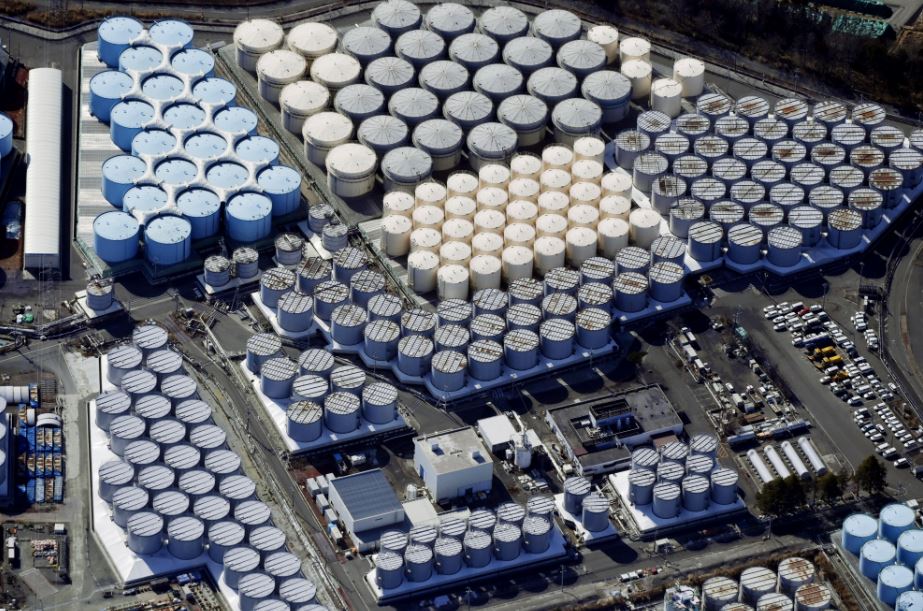
This April 26 marked the 35th anniversary of the Chernobyl disaster in Ukraine. It is considered the worst nuclear disaster in history, claiming 31 lives as an immediate result of the disaster and a further 4,000 who might have died of radiation exposure (the figure remains debatable today). Earlier this month, the Japanese government announced that it plans to release more than 1.2 million tons of radioactive wastewater from the Fukushima nuclear power plant into the North Pacific. The Fukushima nuclear disaster in 2011 was another nuclear accident in the recent memory of the Anthropocene. In the meantime, mankind is battling the covid pandemic while racing against time to accelerate progress against climate change. Because of these accidents, there is resistance to generating electricity from nuclear power. As an English saying goes, “Don’t throw the baby out with the bathwater.” The small modular nuclear reactors can be our nuke baby of hope.
Time is fair for everyone. Time doesn’t wait for anyone. Time is our witness of trust building, peacemaking, redemption, reconciliation, history and legacy.
The clock is ticking. . .
When a house is aflame, shouldn’t putting out the fire be our intuitive priority? Once the fire is put out, we can investigate the cause of the fire, or better, our heatproof robots and smart machines can assist us to restore, revamp and/or rebuild. We are living in this burning house called Earth. Repairing a broken system takes less time than reconstructing one anew. Perhaps it might cost less if we add on sustainable building materials that might be costly for now, but in the long run are a reinvestment in and of itself. Just like the energy efficiency retrofit in older buildings. According to the International Energy Agency, if we pair energy efficiency with clean electricity technologies that are already available, by 2050 we can cut 87% of greenhouse gas emissions from buildings. I’ve learned that 39% of global CO2 emissions come from buildings. Energy efficiency buildings are one of the overlooked low-hanging fruits for climate solution.
The clock is ticking. . .
The degradation of natural resources exacerbates as time goes by, mostly because humans continue to waste food, energy, water, clothes, electronic devices and more. Your consumer behavior determines the fate of the Tragedy of Commons, in which harmful overconsumption will give rise to a death sentence of this planet called Earth. How gullible are you to follow advertisers’ baits and give your money for consumer goods that you will fall out of love with over time. A poor writer may understand better how to keep the cash in hand like a miser. (Click here to learn why artists are poor but endurable.) What’s worse, the goods you don’t use anymore have consumed energy during manufacturing process, and will consume energy again, if they are heading to a circular economy, to be recycled or re-manufactured.

A complete switch to renewable energy takes a long time. And yet we’re racing against time to mitigate and adapt to climate change in order to meet the Paris Agreement targets. How do we keep the power grid stable and resilient when we are only in the beginning phase of energy transformation from fossil fuels to clean energy? Nuclear energy is the world’s second-largest low carbon source of electricity after hydroelectric power. (Hydropower may be huge source of methane emissions—second most abundant greenhouse gas after CO2.) Only 10% of global electricity is generated by 441 nuclear reactors in operation worldwide. When we’re looking for a success story in developing nuclear technology for the country’s largest source of electricity, France is where we should draw lessons. The country generates roughly 80% of its electricity from nuclear energy, much of it generated through recycling. Whether it is for energy supplies or consumption, humankind continues the search for cheaper and reliable energy solutions. If you’re using a 1945-mindset to gauge 2021-nuclear technology, you’re likely to miss a lost opportunity to invest in the nuke baby of hope.
The clock is ticking. . .
We, as the smartest species on earth, can build and also can destroy. If we don’t bet on 2021-nuclear technology to phase out fossil fuels, we’ll lose time to limit global warming and its related effects. Avalanche reaches higher speeds when it races downhill as a result of the increasing weight of snow. The hotter the atmosphere is, the faster the adverse effects of climate change will impact on us. Our current linear take-make-dispose economy will come to its end at a faster pace day by day together with the existence of all living creatures on this planet. Bear with my bluntness. We’re living in an unsustainable world of overproduction and overconsumption. I am the first and last generation of China’s One-Child Policy (1979-2015) which prevented 400 million births. I hope I am not the last generation to save our species and the non-human species from the adverse effects of climate crisis. A circular economy with cheap and clean energy should be what we can do to leave behind for future generations.
Recent studies have shown a silver lining from Chernobyl. Discovery one, the radiation from Chernobyl wasn’t enough to kill cells. Researchers found that the molecular characteristics of the radiation-caused cancers weren’t all that different from what has been observed in randomly-occurring thyroid cancers. It was only the cause—those double-strand DNA breaks—that was different. Discovery two, there weren’t any more DNA mutations in the Chernobyl survivors’ children than there are in kids whose parents had never been exposed to radiation. Since HBO, a U.S. pay television network, produced a miniseries examining the Chernobyl disaster, the partially abandoned city in Ukraine has welcomed tourism boom. When the pandemic recedes, officials hope that they can harness Chernobyl’s tourist potential. In David Attenborough’s documentary film, A Life on Our Planet (2020), we’re able to see Chernobyl rewilding. The absence of humans has led to the flourishing of wildlife, with bears, bison, wolves, lynx, wild horses, and dozens of bird species living around the site. No wonder that Chernobyl has become a new destination for scientists to study how animals and plants respond to the relative absence of human development.
Think deeply, non-human species can live and perhaps thrive in the world without humans. On the contrary, humans cannot live without natural resources and other non-human species.
The clock is ticking. . .
If Chernobyl’s new finding cannot sway you to give a chance to the nuke baby of hope, let us at least listen to what experts say about releasing Fukushima nuclear wastewater into the ocean is okay. According to Forbes and the Japanese government, the radioactive water will be treated before being discharged into the sea in about two years. Japan is a country short of energy and land. Oil remains the largest source of primary energy in Japan, although its share of total energy consumption has declined from about 80% in the 1970s to 40% in 2019. Without releasing the nuclear wastewater into the ocean, Japan cannot complete its plan to complete the decommissioning of the wrecked nuclear plant between 2041 and 2051. There’s a tradeoff here. Which is safer? Building another storage tank on the land that is already scarce or discharging the treated wastewater into the sea. What if there will be an unexpected tropical storm or another tsunami hitting Japan, can the storage tank brave the elements? Which is less costly? As the evidence suggests, the latter.
Furthermore, the advanced liquid processing system cannot remove tritium, or hydrogen-3 (三重水素 in Japanese and 氚 pinyin chuān), the least radioactive, and least harmful, of all radioactive elements. The Japanese government maintains that the concentration of tritium will be reduced to one-seventh of that required by the World Health Organization’s drinking water standard. The release of the treated water will be monitored by third-party observers such as the International Atomic Energy Agency (IAEA). And any release of treated water into the Pacific off Fukushima Prefecture will be done in small quantities each time and carried out over a period of about 30 years.
What will the world become in 30 years? A warmer global temperature and fewer freshwater resources, that’s what I can foresee. Will a warmer temperature on land makes nuclear waste storage more volatile? If we cannot trust our governments and scientists, how can we take collective action to fight climate crisis whose impact can be more unpredictable and regional than the covid pandemic? Have you thought about those anti-nuke environmental groups may be funded by anti-nuke for-profit organizations? As strongly opposing as it is, can China be as transparent as Japan or as cooperative as the United States about their own nuclear projects?
The clock is ticking. . .
In the business world, time is money. Every minute we are debating, we are losing money. How long can we live given the marvelous effects of pharmaceutical chemicals? And how much can we do in our lifetime to truly save ourselves, our loved ones and our community from climate change? There are plenty of low-hanging fruits to mitigate and adapt to climate change. For example, we can buy time by adopting nature-based solutions and plant more trees. We need to integrate what we have technologically to fix the problems we’re certain about. Everyone can reduce waste and control our desire of buying unnecessary consumer goods. We only have one planet and one universal time measurement of second-minute-hour. Which stake is more cost-effective: agreement on political correctness derived from divisive concepts that are rampant in governments and on social media platforms, or the low-hanging fruits for a sustainable future? Don’t throw the hopeful nuke baby out with the bathwater.
